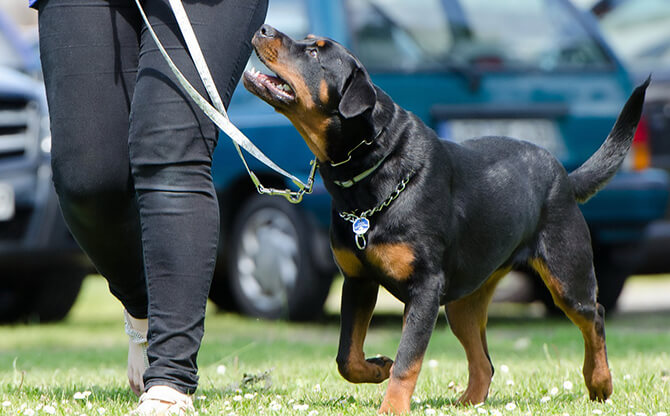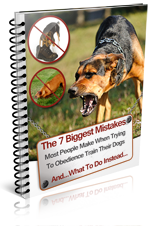
John and Cathy adopted a 3-month-old mixed breed puppy about 2 weeks ago. Max, the puppy, is usually easy going but growls when John or Cathy try to pick up his toys, or when they attempt to pet him or get close to him when he is eating. Last week Max ran away into the bathroom with a bone he had taken from the trash. When John came into the bathroom Max growled at him, then snapped when John tried to remove the bone from his mouth. John and Cathy would like to keep Max, but they do not want to have an aggressive dog as they have children and other family members that visit often.
Considerations
John and Cathy need to consider what reasons, from Max's perspective, make aggression a good behavior for him to use. Max has had several changes in the last month that may cause him to be fearful and anxious in a new environment, and may cause a fear provoked aggressive response.
The Rescue center had no information on Max's past history or socialization experiences. It may be possible that Max has not had to share, or does not understand that humans may take things away, but they will provide something in return such as extra attention or a positive reward.
Behavior
Max is responding fairly well overall to his new environment. His is using a behavior that is intended to warn John and Cathy that he is becoming distressed an aggressive by growling. This growling can be a signal for humans to change the environment or the approach. Punishing Max for growling at this point will only teach him not to growl, not to stop being aggressive.
Training program
John and Cathy have decided that Max responds with aggression largely out of fear. They have decided to enroll him in a puppy obedience class to help him with socialization and in adjusting to new environments and learning to trust them. In addition they are working with Max on providing distractions and positive rewards prior to him becoming aggressive. They have decided to offer him a treat and then reward him with praise and petting when he releases the toy or item in his mouth to them. John and Cathy will then return the item immediately to Max. This will be repeated frequently throughout the day, gradually increasing the time that they keep the item from Max. The dog will not refuse to give up the toy, as he would much prefer the treat. Gradually Max will understand that giving up a toy gets him lots of praise and rewards, and he will even get the toy back as well!
Cathy and John are going to spend time in the room with Max when he is eating. They will talk to him and move about at a distance. Gradually they will move closer and let him learn that they are not trying to take his food. They will schedule feeding and leave the food down for him 20 minutes twice a day. In addition they are planning a trip to the vet to make sure he is receiving enough food at this high growth time in his life.
Environmental changes
In addition to the training program John and Cathy have decided to increase the variety of toys that Max has access to during the day. They will avoid playing tug of war games with him, or any wrestling type activities. John and Cathy will continue to praise and treat Max when he does things correctly. They will make sure that all bones, garbage or other problematic items are kept away from Max until he becomes less possessive and fearful. In addition they plan to have Max neutered as soon as possible.


